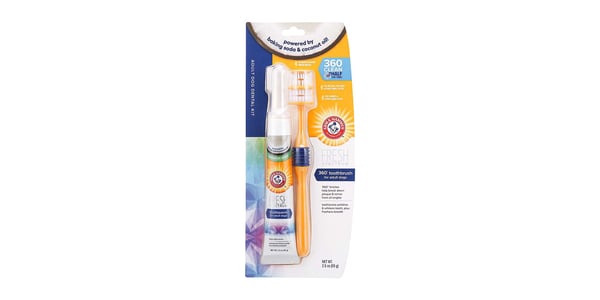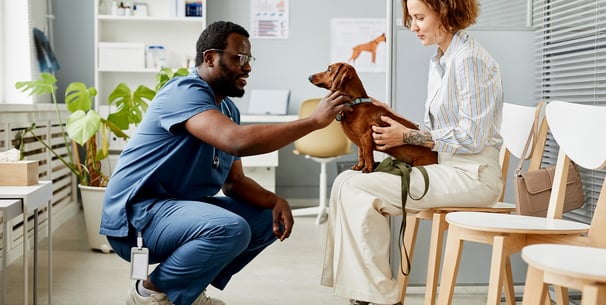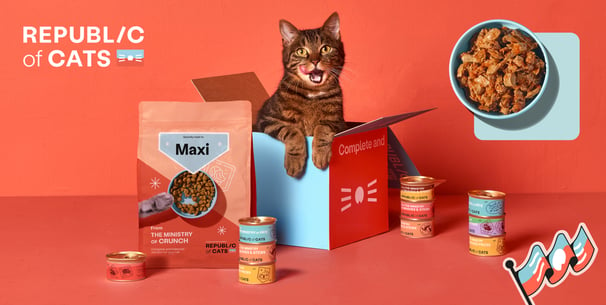How to Keep Your Dog's Teeth Clean With a Dog Toothbrush and Toothpaste
Index:



Introduction
Unfortunately, dental and periodontal disease is a very common problem in dogs and, in actual fact, lots of cases could be avoided simply through regular dental checkups and at-home brushing with a dog toothbrush and toothpaste.
It really can be this simple! Dog toothbrushes and pet toothpaste are widely available across the UK both online and in pet shops and can help to reduce dental diseases and vet bills. It can also help to improve your dog’s training ability and manners as well as helping with that bad breath!
At Waggel, we believe your dog’s teeth and gums are just as important as any other part of their body and therefore cover treatment costs associated with dental-related accidents or illnesses up to £1,000. All you need to do as a pet owner is make sure you have your vet check your dogs teeth every 12 months and note it on their records.
In this blog, we’re here to lay down the dos and don'ts of brushing your dog’s teeth so you can avoid tooth decay and hefty treatment bills and help your dog live their healthiest life.
Understanding doggy dental health



Dogs have two sets of teeth in their lifetime, just like us. As puppies they have 28 deciduous teeth, these are also known as baby teeth. As adults, they’ll have a full set of 42 permanent teeth.
Whilst most dogs grow to have 20 teeth on the top of their jaw and 22 on the bottom, not all do. For lots of yet unknown reasons, some teeth can become entrapped by bone or gum tissue and will never erupt or may need to be surgically removed in some cases.
Certain breeds like Pugs and Chihuahuas can have poorly aligned jaws which means their teeth are often crowded or missing in some places. This is a common issue in flat-faced breeds and places them at a higher chance of developing dental disease.
Coming second to ear infections, dental disease and periodontitis are two of the most commonly diagnosed issues by vets around the world. This issue can largely be avoided by maintaining good levels of oral hygiene, making sure they have clean teeth and keeping their breath fresh.
Pets' teeth require a daily routine of brushing with a specialised pet toothbrush in order to maintain these levels of dental health. A tooth extraction can be a costly exercise so keep a keen eye on any issues with your pet.
Taking your dog for yearly dental check-ups is one surefire way to stay on top of plaque build-up and any potential issues.
As mentioned, receiving yearly check-ups means that you’ll also be covered for dental care through your Waggel policy if your pet suffers from a dental-related accident or illness.
Before you start cleaning your pooch’s teeth, it’s best to ask your vet to show you exactly how in a way that is suitable for your specific breed.
For example, a French Bulldog will require a different brushing technique to that of a German Shepherd!
For more information on safe medication practices for dogs, including common household medicines, read our article on whether you can give dogs paracetamol.
Choosing the right toothbrush and toothpaste for your dog
Whilst you might assume all dog toothbrushes and toothpaste are the same, there’s actually a big difference between human brushes and dog ones! So, to stop you from feeling overwhelmed we’ve compiled a list of our most highly recommended types of dog toothbrushes.
1. Arm & Hammer 360 Toothbrush for Adult Dogs



This uniquely designed toothbrush helps to make brushing easy with different-sized sections and bristles to reach the toughest of places which helps prevent plaque formation. It’s also ergonomically shaped with a rubber-gripped handle meaning you’re in total control.
2. Beaphar Toothbrush & Toothpaste for Cats & Dogs



This clever kit contains both dog toothbrush and toothpaste making for an effortless brushing experience. With a double-ended toothbrush, you can thoroughly brush your dog’s teeth with ease.
This kit also includes dog (and cat) friendly toothpaste. It’s fluoride-free and liver-flavoured so even the fussiest of eaters are sure to enjoy it.
It’s important to know when looking for doggy toothpaste, it is vastly different to human toothpaste. The reason why? Many human toothpastes contain an artificial sweetener called xylitol. This is toxic to dogs causing potential liver damage and a drop in blood sugar.
To make sure you’re getting the right kind of dog toothpaste, ask your vet for recommendations or buy it directly from a pet store.
It’s also important to ensure you’re using the right kind of toothbrush. Whilst any brush with soft bristles can do the trick such as a human baby toothbrush, a specifically designed doggy toothbrush can help you to get into those hard-to-reach places.
They’re also ergonomically designed for a tight grip and ease whilst you’re brushing those pearly whites.
If you have more than one dog, they should have their own toothbrush. Sharing toothbrushes spreads bacteria and can cause infection.
Steps to brush your dog’s teeth



1. Before you head in with your toothbrush, it’s important to get your dog used to having their mouth handled. Letting them smell and lick the tasty dog toothpaste is a good place to start.
2. After this, try and rub the toothpaste around their teeth with your fingers.
3. Next, introduce your toothbrush and gently brush the canine teeth. These are the prominent fangs at the front of your dog’s mouth.
4. Once your dog is comfortable with having their canine teeth brushed, introduce brushing to the molars (the teeth at the back of the mouth).
5. And finally, introduce brushing to the front teeth. These are known as incisors.
The minimum recommendation for brushing your dog’s teeth is three times a week. This helps to remove plaque and tartar buildup.
To make brushing a positive experience, it’s best to take things slow and on your dog’s terms. Finding a toothpaste they love can turn brushing from a chore into a treat.
Following a routine and rewarding your dog every step of the way will help them to understand that teeth brushing is a positive thing.
Alternative methods of dental care



We get it, some dogs just don’t like getting their teeth brushed and attempting to do so results in nothing but cheese or chicken-flavoured toothpaste all over the floor. But this doesn’t mean they have to suffer from any nasty teeth-related illnesses, there are lots of other ways to get those teeth nice and shiny.
Firstly, we recommend dental chews and toys like these that are designed to act exactly like a toothbrush with lots of hard bristles to clean both teeth and gums.
We also have a guide to dental sticks for dogs here.
There are also lots of treats on the market such as Whimzees which are also grain-free. These mini toothbrush-shaped treats can be given daily and are sold in a range of sizes perfect for every breed.
Raw food diets are also a great way to keep your dog's teeth perfectly white. This is because raw foods contain natural enzymes that work to protect the teeth and gums. Raw food doesn’t contain any additives or damaging ingredients such as sugar which can cause decay and dental disease.
Another option to help your dog’s dental health if you are unable to brush their teeth is to opt for a professional dental cleaning visit. This takes place under general anaesthesia and consists of a dental examination, cleaning, scale and polish. Dental health checks should take place every 6 months to ensure your dog (and their teeth) are as healthy as can be.
Conclusion
Doggy dental and overall oral health is a super important part of your furry friend’s maintenance. Making regular brushing an integral part of your dog’s routine a few times a week can significantly reduce the chances of dental disease development.
Without a solid routine in place, you could be looking at quick plaque development and multiple costly vet visits, something no one wants!
There are a wide range of ways to maintain good oral hygiene for your dog from chews and treats to raw food, or a professional vet visit every 6 months. The latter of which will allow you to claim for dental-related accidents or illnesses, should the worst-case scenario arise.
With lots of patience, positive reinforcement and love, your furry friend can look forward to a gleaming smile of pearly whites!
Interested in reading more of our articles for top tips and training help? Why not teach your dog to roll over? Or to be a top pet parent, take a look at our blog on the benefits of a licky mat.
Waggel Pet Insurance
Need more help? You're in luck if you're a Waggel Pet Insurance member. Along with our excellent coverage, we offer access to a 24/7 online vet to answer all your sticky questions, especially if you need grooming assistance.
Not a member? Why not get a quote now and cover your furry friend for a range of illnesses, all while enjoying our amazing perks and rewards.
Want more like this?
Get updates from us with helpful info, advice, answers to frequently asked questions and much more.
Index:
Related posts:
Get your quote
Along with our excellent coverage, we offer access to a 24/7 online vet to answer all your sticky questions.





